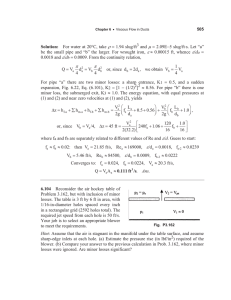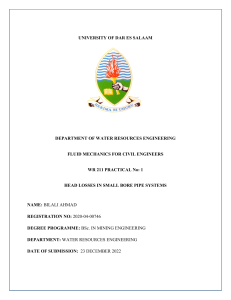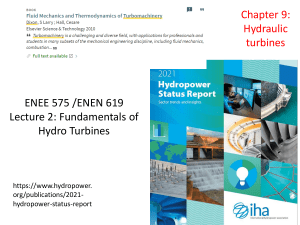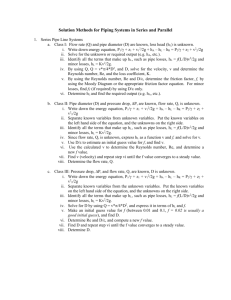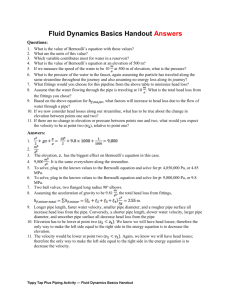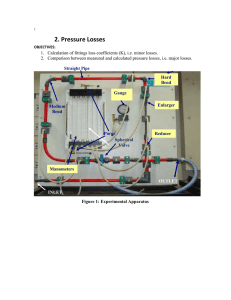R. Shankar Subramanian
advertisement
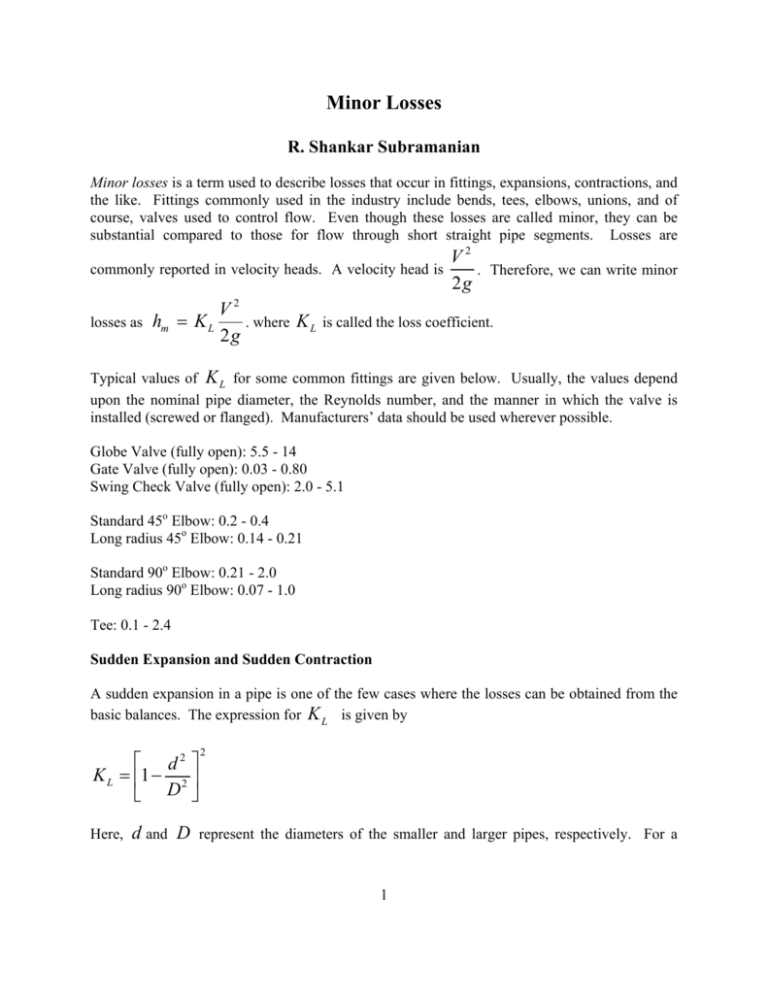
Minor Losses R. Shankar Subramanian Minor losses is a term used to describe losses that occur in fittings, expansions, contractions, and the like. Fittings commonly used in the industry include bends, tees, elbows, unions, and of course, valves used to control flow. Even though these losses are called minor, they can be substantial compared to those for flow through short straight pipe segments. Losses are commonly reported in velocity heads. A velocity head is losses as V2 . where K L hm = K L 2g V2 . 2g Therefore, we can write minor is called the loss coefficient. Typical values of K L for some common fittings are given below. Usually, the values depend upon the nominal pipe diameter, the Reynolds number, and the manner in which the valve is installed (screwed or flanged). Manufacturers’ data should be used wherever possible. Globe Valve (fully open): 5.5 - 14 Gate Valve (fully open): 0.03 - 0.80 Swing Check Valve (fully open): 2.0 - 5.1 Standard 45o Elbow: 0.2 - 0.4 Long radius 45o Elbow: 0.14 - 0.21 Standard 90o Elbow: 0.21 - 2.0 Long radius 90o Elbow: 0.07 - 1.0 Tee: 0.1 - 2.4 Sudden Expansion and Sudden Contraction A sudden expansion in a pipe is one of the few cases where the losses can be obtained from the basic balances. The expression for K L is given by d2 K L = 1 − 2 D Here, d and D 2 represent the diameters of the smaller and larger pipes, respectively. For a 1 d d ≥ 0.76 . For smaller values of , we D D d2 can use the empirical relation K L = 0.42 1 − . 2 D In both cases, we should multiply K L by the velocity head in the pipe segment of diameter d . sudden contraction, we can use the same result if The losses would be smaller if the expansion or contraction is gradual. When a pipe empties into a reservoir, all the kinetic energy in the fluid coming in is dissipated, so that you can treat this as a sudden expansion with the ratio 2 d = 0, D yielding K L = 1.

